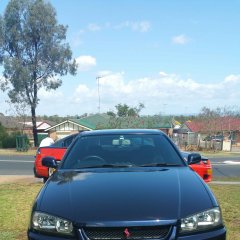Really Weird Problem...any Help?
Announcements
-
Similar Content
-
Latest Posts
-
That's the bottom half of something I saw in a Sasha Grey video once.
-
By No Crust Racing · Posted
Gas MIG for learning, I was able to weld up some nice 1.6mm tubs so you can do thin stuff easily enough. Then moved on to thick caliper adaptor brackets with the same machine, all good. Arc/Stick is great for dirty garden work etc, but Gas MIG for starting on car stuff. Jump on the NCR FB page and search ATP Tubs or GKTech caliper adaptors for pics/info. I'm no pro but it wasn't hard to learn. Be willing to grind and go again though if it's cold etc.






Recommended Posts
Create an account or sign in to comment
You need to be a member in order to leave a comment
Create an account
Sign up for a new account in our community. It's easy!
Register a new accountSign in
Already have an account? Sign in here.
Sign In Now